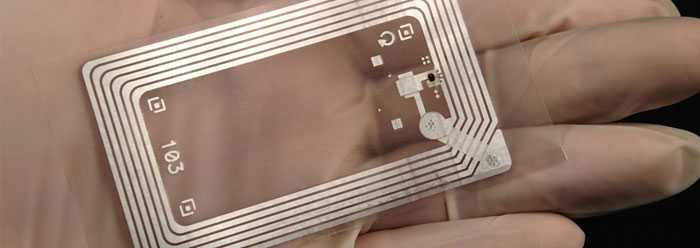Most people are familiar with the barcode labels on items purchased at the store. Silicon-based radio frequency identification, or RFID, tags are another kind of label that has been used for decades to track containers, farm animals, and library books. Now, new nanotube-based tags may replace bar codes and revolutionize the way goods are tracked, shipped, and purchased.
Rice University in Houston, Texas, is famous for developing carbon nanospheres, called “buckeyballs,” as well as carbon nanotubes. Researchers there have developed nanotubes for various technologies, and they found that the nanotubes can be activated under a specific radio frequency signal.
The new devices, when placed on packaging through nanotube-infused ink, may obviate the need to go through “check out” stands at grocery stores. Instead, the price of each purchased item could be read upon exiting a store and the money electronically subtracted from an account—if each buyer carries a personal RFID, also.
Research professor Gyou-jin Cho at Sunchon National University in South Korea leads the development team behind what he considers to be the prototype of the future tags. The current version, described in the February 2010 edition of the journal IEEE Transactions on Electron Devices, was printed on foil, not paper, and is still too large for widespread commercial use.1
Cho estimated five more years of product development will be required before the technology can be rolled out, with each printable RFID tag costing about a penny.2 Rice University researcher James Tour has been advising Cho on the project, as well as supplying the nanotubes. He said in a Rice press release that because the nanotubes require “no power source, there’s no lifetime limit.”2
The nanotubes are also benign. “More nanotubes occur naturally in the environment, so it’s not even fair to say the risk is minimal. It’s infinitesimal,” Dr. Tour stated.2
Current product identification relies on manually scanning UPC bar codes on each product. Replacing printed UPC codes with printed RFID tags would not only expedite the buying process, but also enable real-time tracking of each item inside a store, if the technology can be fully developed.
When UPC bar codes became industry standards in the United States between the 1970s and 1980s, some Christians speculated that the technology could be used to track not just products, but also people. To them, this would make the plain sense reading of several passages in the book of Revelation feasible. Revelation describes an evil world ruler who will masquerade as the Lord Christ reigning on earth, and his government will strictly track and ration buying and selling:
And he causeth all, both small and great, rich and poor, free and bond, to receive a mark in their right hand, or in their foreheads: And that no man might buy or sell, save he that had the mark, or the name of the beast, or the number of his name. (Revelation 13:16-17)
The late Institute for Creation Research founder Henry M. Morris wrote about this passage in his 1983 book The Revelation Record: “The mark is something like an etching or a tattoo which, once inscribed, cannot be removed, providing a permanent identification.”3 And since there will be three options for this visible identifier—a mark, a name, or a number—this future tracking system seems in context to be enforceable with simple technology.
Although it is interesting to theorize that some variant of RFID tags could centralize the tracking of people and products, the use of such high technology for the purpose described in Revelation 13 remains speculative.
References
- Jung, M. et al. 2010. All-Printed and Roll-to-Roll-Printable 13.56-MHz-Operated 1-bit RF Tag on Plastic Foils. IEEE Transactions on Electron Devices. 57 (3): 571-580.
- Nano-based RFID tag, you’re it. Rice University press release, March 18, 2010.
- Morris, H. M. 1983. The Revelation Record. Carol Stream, IL: Tyndale House Publishers, 252.
* Mr. Thomas is Science Writer at the Institute for Creation Research.
Article posted on March 30, 2010.

























